Short Book Reviews
Hanna Kryszewska, Poland
Hanna Kryszewska is a teacher, teacher trainer, trainer of trainers. She is a senior lecturer at the University of Gdańsk, and EU Teacher Training College where she trains pre-service teachers. She is co-author of resource books: Learner Based Teaching, OUP, Towards Teaching, Heinemann, The Standby Book, CUP, Language Activities for Teenagers, CUP, The Company Words Keep, DELTA Publishing, and a course book series for secondary schools: ForMat, Macmillan. She is also co-author of a video based teacher training course: Observing English Lessons. Hania is a Pilgrims trainer and editor of HLT Magazine.
E-mail: hania.kryszewska@pilgrims.co.uk
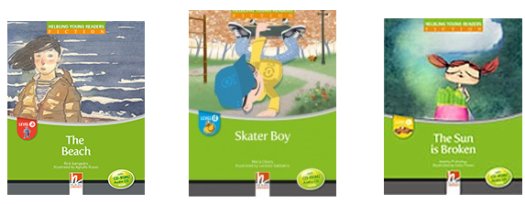
Helbling Young Readers Fiction. Helbling Languages (2013). e.g. The Beach. Rick Sampedro ISBN-13: 978-385272-523-9, pp 32, Scater Boy. Maria Cleary ISBN-978-3-85272-526-0, pp 32. The Sun is Broken. Andres Pi Andreu ISBN 978-3-85272-525-3. Books in this new series of graded reading materials for young learners of English are at the Starters and Movers levels according to the YLE, or levels 1-3 according to the Trinity Exams scale. The stories are interesting and told in basic English using simple grammar: present tenses and modal verbs, and basic vocabulary. Apart from language input and practice, the stories have a message such as the same place can be perceived differently by different people, or that you need to help especially if you are the only one who can do that. Before the students either hear the story from the CD or read by the teacher following it in the book, they do some exercises in the Play station section which pre-teaches and activates the language the learners need to follow the story. The activities which are on the CD-ROM are interactive and fun. The stories themselves are very good and often charming, and on each two page spread there is a little icon, a bug, a duck or a crab which gives the readers an extra task such as answering a personal question, following a line or spotting something in the picture. At the end of each book there is Play Station 2 section which revises some of the language in the story, a Play Station Project like making a sand bottle, or making a board game. There is also a mini dictionary. The font is easy to read and the books are beautifully illustrated. The CD-ROM contains an audio book and some activities, language games, karaoke, chants, story sequencing activities and an audiovisual dictionary. The Beach and The Sun is Broken are more suitable for girls, whereas Scater Boy will appeal more to boys. Highly recommended.
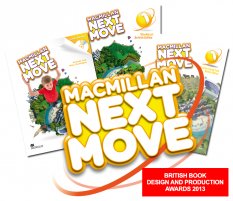
Macmillan Next Move. Starter and 1-6. A. Cant and M. Charrington (Starter and 1-4), Viv Lambert (5-6). Macmillan. (2014). ISBN 978-0-230-46624-1, pp110. ISBN 978-0-230-46631-9, pp 110. ISBN 978-0-230-46638-8, pp 110. ISBN 978-0-230-46645-6, pp 110. ISBN 978-0-230-46652-4 pp 110. ISBN 978-0-230-46659-3 pp 110. ISBN 978-0-230-46666-1 pp 110. This is new seven level language course for young learners. What makes it stand out is its cultural angle and content rich environment. In each unit the learners ‘travel’ to a different country, and the ELT content is combined with information about the country, which is also reflected in the artwork in the unit. There is a good balance of fiction and non-fiction reading. At higher levels the reading texts become longer and the vocabulary becomes more complex; also the artwork becomes more subdued which reflects the fact that the learners are growing up. The interactive CD-Rom contains, what the publisher calls, language interactivities, as well as songs and topic based videos. The videos have been specially produced for the purposes of the book and, if you wish, you can also access the transcripts. The songs have been also written for the purposes of the course; the melody is catchy and lively, and the lyrics often have a message, like smile and say hello to your neighbours and be nice to them. I am sure many teachers and learners will enjoy this energetic and innovative course.
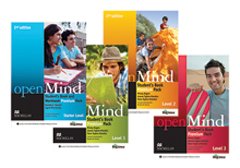
Open Mind. Starter Level and Levels 1-3. 2nd Edition. D.E. Zemach and I. Wisniewska (Starter Level) M. Rogers, J. Taylore-Knowles and S. Taylore-Knowles (levels 1-3). Macmillan. (2014). ISBN 9780-0-230-45889-5, pp115. ISBN 978-0-230-45908-3, pp159. ISBN 978-0-230-45939-7, pp159. ISBN 978-0-230-45939-7, pp157. ISBN 978-0-230-45972-4, pp159. This is the second edition of a 2010 course for adult learners of English: levels A1-B1. Like all courses for adult learners at these levels it teaches grammar, vocabulary, the four skills and pronunciation. What makes the course stand out is the choice of topics which target the interest of the learners and their needs. They learn to use the language confidently in professional, academic and personal contexts, with great emphasis being put on communication, speaking and fluency. The course also teaches and develops Life Skills such as understanding forms, categorising, understanding your learning style, managing time, establishing priorities, making personal change, working as a group to do a task, making choices, making a plan, taking notes on a text, brainstorming in a group, and analysing strengths and weaknesses (Open Mind Level 1). Another innovative feature is the Independent learning sections: Notice!, Reflect and How are you doing? which help the learners analyse their own progress. The course is accompanied by video material that supports the themes and key language. The Student’s Book Pack contain the print student’s book, webcode access to the Student’s Resource centre with downloadable video worksheets, class audio MP3s and a DVD with the video extracts. I am not in the position to judge how the 2nd edition differs from the 1st edition, but the current edition is really impressive.
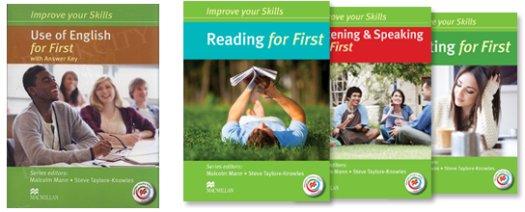
Improve your Skills. Series editors M. Mann and S. Taylore-Knowles. (2014)Macmillan. Use of English for First. ISBN 9780230460942 pp. 112. Reading for First. ISBN 9780230460935 pp.112. Listening & Speaking for First. ISBN 9780230464650 pp. 136. Writing for First. ISBN 9780230460911 pp116. This is a four book series for learners who are preparing for the Cambridge English First exam. Each of the books contains an introduction to the given part or parts of the exam it is devoted to, and then is divided into twelve topic based units which provide or revise the language and grammar, and develop the skills necessary to perform well in the exam. For example in Use of English for First the learners become familiar with the role of phrases and idioms, phrasal verbs, recognising parts of speech in word building etc. so as to be able to choose the correct answer in the test. In Reading for First, among others, they work on deducing the meaning of unfamiliar words, understanding cohesion, attitude and opinion, understanding exemplification and implication. In Listening & Speaking for First, in the listening part, by using the CD learners improve their listening by working on understanding purpose and function, feelings and attitude, understanding context etc, while in the speaking part they work on the various aspects of the oral exam with a strong pronunciation focus. In Writing for First they learn how to use connectors and cohesive devices, how to evaluate and prioritise, or plan and justify. Each of the books comes with an access code to the Macmillan Practice Online website. The series can be used in class or as self-study material if the student has access to the edition with the answer key.
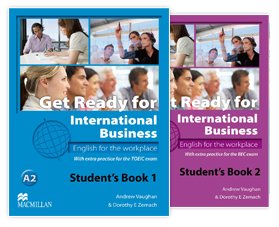
Get ready for International Business. Student’s Book 1 and Student’s Book 2. A. Vaughan and D. E. Zemach. Macmillan. (this edition 2013). ISBN 978-0-230-44786-8, pp 137. ISBN 978-0-230-44791-2, pp 141. This is a two part course for learners who will need to use English in the workplace and in business situations. The course builds the learners’ confidence in using English in communicative settings. The course books are not organised in the conventional way of most course books: grammar, vocabulary, the four skills and pronunciation. Instead it is highly communicative and functional, and the language taught in a given unit revolves around a given situation, for example in the unit Can I take a message? learners learn how to answer the phone, controlling language, taking a message, and ending a call. The same functions such as telephone exchanges, and receiving and passing on messages are then developed and reinforced in a business context (Student’s Book 1). In Student’s Book 1 there is a lot of listening and speaking, and hardly any reading, while in Student’s Book 2 there is more reading and writing. The course is a good preparation for the TOIEC exam, and each unit is accompanied by a TOIEC test-type practice page which reviews the language from each unit and gives the learners exam-like experience.
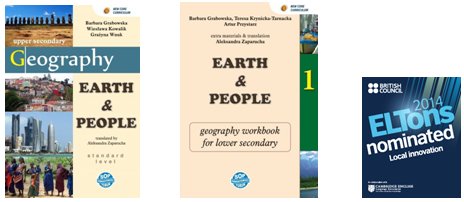
Geography 1. Earth & People. Teacher’s Guide. A. Zaparucha. (2013) Geography 1. Earth & People. Geography workbook for lower secondary. B. Grabowska, T. Krynicka-Tarnacka, A. Przystarz. Extra materials and translation A. Zaparucha (2013) SOP Oświatowiec Toruń sp.z o.o. ISBN 978-83-7443-163-7, pp 106. ISBN 978-83-7443-160-6, pp 160. This book supports a CLIL or bilingual educational approach. The authors are experts in geography and language teaching, so the content is well researched, and the language aspect is creative and innovative. The topics include: geography and mankind, planet earth, using a map, the movement of planet Earth, the natural diversity of landscapes, natural, political and cultural diversity in Europe, and the landscapes of Europe. A workbook unit, which is to be used by the learners, contains a text which presents facts and the relevant vocabulary, comprehension questions on the texts, vocabulary work, tasks checking the understanding of the subject, maps where relevant, diagrams and other visual material, and space for lesson notes. At the end of the workbook book there is a glossary of terms and their Polish translations, since the book is aimed at Polish schools. The teacher’s guide contains some very interesting sections: reasons for foreign language learning, a justification of CLIL, methodology for implementing CLIL, assessment in CLIL context, and a section on pronunciation, stress, rhythm and intonation. Unfortunately the authors refer to the phonemic chart only, and do not refer to on-line pronunciation dictionaries. Similarly, in some units in the teacher’s guide there is pronunciation of the individual words in phonemic script only. Overall what seems to be missing is audio material and links to on-line video resources. However, the teacher’s guide emphasises the teaching of lexical chunks rather than single words, and contains lesson plans with innovative ideas, which is a forte. The material was nominated for the ELTONS 2014 Award, and the verdict of the jury was: “This is a very good example of how to support teachers and learners in CLIL.’
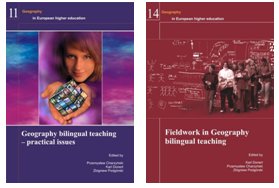
Geography in European higher education series. Geography bilingual teaching – practical issues. P. Chrzański, K. Donert and Z. Podgórski (eds).( 2009) SOP Oświatowiec Toruń sp.z o.o ISBN 978-83-7352-185-8 pp 143. Fieldwork in Geography bilingual teaching. K. Donert, P. Charzuński and Z. Podgórski (eds) (2010) SOP Oświatowiec Toruń sp. z o.o ISBN 978-83-7352-190-2, pp 116. These two collections of articles were published as a result of workshops supported by the European Commission (Socrates). The workshop leaders come from Germany, Poland and the UK; the Polish editors are lecturers at the Nicolaus Copernicus University in Toruń, Poland, the UK editor is based at Liverpool Hope University, Liverpool, UK. Their expertise guarantees a high standard of contributions. The workshops were devoted to teaching geography in a bilingual or CLIL context, which is reflected in the contributions, for example The Importance of Learning Outside the Classroom, Bilingual Education in the Netherlands, Geography bilingual teaching – practical issues, or Ways of teaching English geographical terminology. Some of the texts are suitable for geography teachers only, others will be of interest to teachers of other subjects who specialise or are considering branching out into bilingual or CLIL education.
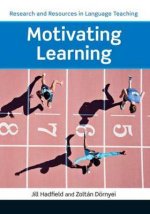
Motivating Learning. J. Hadfield and Z. Dornyei. Pearson (2013). ISBN 978-1-4082-4970-3. pp 307. The book is published in the new Research and Resources in Language Teaching series, eds. Jill Hadfield and Christopher. N. Candlin. It is a ground breaking series which combines the most recent research and state of the art classroom practice. The theoretical background for the book is the concept that a learner’s motivation is shaped by the ‘ideal future language self’. (The academic background to the underpinning theory is the research and ideas of Marcus and Nurius – Possible selves (1986)). In other words the more positive vision of themselves the learners have, the more motivated they are to achieve their aims. The book moves away from theories which made teachers responsible for their learners’ motivation. The book falls into four parts: from research to implications, from implications to application, from application to implementation, and from implementation to research. According to the authors, a visionary motivational programme consists of six elements: creating a vision, strengthening the vision, substantiating the vision, operationalising the vision, keeping the vision alive and counterbalancing the vision. These six elements are the organising principles of the main body of the book. Each consecutive chapter deals with one of the elements in theory followed by practical classroom ideas, which are innovative, relevant and very inspiring. Highly recommended.
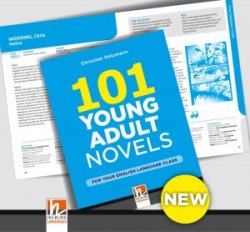
101 Young Adult Novels For Your Language Class. C. Holzmann. Helbling Languages (2014). ISBN 978-3-85272-571-0. pp 231. The book is a unique selection of English novels for young learners which can be read in the original by learners who are on B1 level. The selection can be used in class or as part of extensive reading programmes. Reading the books the learners will become familiar with titles popular in the UK but perhaps less known in their countries. Mostly the titles are recent publications, but there are a few classics too. (The author has decided not include some obvious authors, like Tolkien or Rowling). The ones that are selected are good classroom reading and a starting point for discussion, especially those titles which touch upon more controversial topics. Some titles will just be a good read like thrillers, and some suitable for project-work. The typical two page spread is devoted to one title. You will find information on the level, key words and main theme, awards the title received, a short biographical note about the author, a brief summary of the plot, fun facts and trivia about the book or author, why the author thinks the book is worth reading, and an extract from the book. There are also suggestions of other books by the author, film links, and suggestions of more challenging titles related to the topic. There is also information for the teachers on how to use the books in class, and suggested reading on how to use literature in class with commentaries like: only for the dedicated, slightly dated but with a handful of good ideas, it’s worth a browse, some very nice illustrations, the title says it all – lesson plans in the Pilgrims resource book format, etc. At the end of the book the titles are all indexed by title and theme, so it is very easy to navigate the book. The author also promises that there will be a website which will publish further tips, and teachers will also find updates on new titles:
http://www.helblinglanguages.at/101yans/index.html
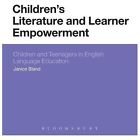
Children’s Literature and Learner Empowerment. J. Bland. Bloomsbury (2013). ISBN 978-1-441-144411-6. pp 331. This book is a comprehensive introduction to children’s and young adult literature, and how they can be used in teaching English as a foreign or second language. First it contrasts well crafted texts with poorly crafted ones, both in terms of language and content. Then it looks at the importance of the visual impact and visual literacy in the literature class. The author analyses the role of the graphic novel as the favourite genre of many learners in their mother tongue encounters with literature, and the benefits of the graphic novel in the ELT class, used to bridge ‘the curricular gap’. Part One of the book looks at literary literacy, first at post-modern fairy tales which are unpredictable and whose reception is indetermined; the language learners and addressees of the tales can make their own meaning. Then Part Two looks at poetry, language patterning in children’s literature and creative writing, and at children’s plays as a way to perform literature and engage in improvised language use and creativity. Part Three is devoted to what the author calls cultural critical literacy, which involves critical thinking, engaged reading and intercultural involvement. The book is a fascinating read for all those who want to know more about why and how we should introduce literature into the young learner’s and young adult’s language class. The author's knowledge of the subject is impressive.
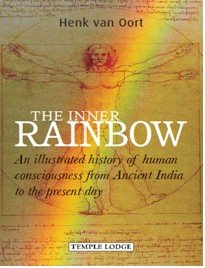
The Inner Rainbow. An illustrated history of human consciousness from Ancient India to the present day. H. van Oort (2014). ISBN 978-1-906999-60-5. pp 103. The book comes from a Pilgrims trainer, author of resource books and HLT contributor who has made himself known as expert in teaching young learners. This book is a surprise and shows Henk in a new light. As he states in the acknowledgement, the book was inspired by Rudolf Steiner’s World History in the Light of Anthroposophy. The aim of the book is to demonstrate how human consciousness has changed over the ages, to observe ‘pictorial and poetic expression brought forth by the consecutive cultural periods’, and to analyse the way ‘people saw themselves and their surroundings’. The introduction contains a historical overview from the point of view of milestones and turning points in human history, such as, for example, separation from the divine world or conquering the physical world. The individual chapters in the book present the milestones, presented with erudition and historical accuracy. The main body of the book is divided into the Prologue, Ancient India, Ancient Persia, Ancient Egypt and Babylonia, Ancient Greece, Ancient Rome, Germanic mythology, The Middle Ages, Early Renaissance, Sixteenth Century, Seventeenth Century, Eighteenth Century, Modern Times and Epilogue. Sometimes there is just one milestone per given historical period e.g. The Middle Ages - Chartres, sometimes up to five as in the case of Eighteenth Century – A Scientific Experiment, Coalbrookdale By Night, Robinson Crusoe, The Feats of Reason, and William Blake. The milestones are well chosen and well justified, written up in a succinct and elegant style. The book is beautifully illustrated with period artwork, or artwork referring to the subject created in later epochs, such as The Tower of Babel by Pieter Brueghel the Elder. This is not an ELT book as such, and the author himself states ‘education is not the subject of this book’, and yet there is a parallel between the development of human consciousness in general, and the growing up of an individual. This book will be of interest to those teachers who are interested in history, fine arts and the ascent of humankind; they may even be tempted to use the book with more mature high level learners.
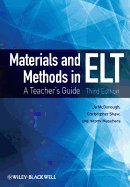
Materials and Methods in ELT. A Teacher’s Guide. Third Edition. J. McDonough, C. Shaw and H. Masuhara. Wiley-Blackwell (2013). ISBN 978-1-4443-3692-4. pp 334. This book is an exhaustive manual for both students on language teaching programmes at universities and professional teachers who want a structured framework to learn more about teaching. It is different from many publications on the subject which are more suited for pre-service teachers in teacher training colleges and candidates on CELTA and DELTA courses. The book strikes a good balance between the principles and practice of language teaching. The chapters fall into three sections: Topics in the Design of Materials and Methods, Teaching Language Skills and Aspects of Classroom Methods. The book is the third edition (first edition published in 1993, then revised in 2003). It introduces new topics: assessment and feedback, using technology, and IT. It also includes samples of recently published teaching materials and course books, and transcripts of classroom interaction. The extensive bibliography at the end of the book (20 pages) points the users of the book towards further state of the art publications on the subject.

Please check the Methodology and Language for Primary Teachers course at Pilgrims website.
Please check the Methodology and Language for Secondary Teachers course at Pilgrims website.
Please check the Teaching Advanced Students course at Pilgrims website.
Please check the How the Motivate your Students course at Pilgrims website.
Please check the CLIL for Secondary Teachers course at Pilgrims website.
Please check the CLIL for Universities course at Pilgrims website.
Please check the Teaching English Through Music & Art course at Pilgrims website.
Please check the Practitioner Course in Developing Business English Skills course at Pilgrims website.
Please check the How to be a Teacher Trainer course at Pilgrims website.


|